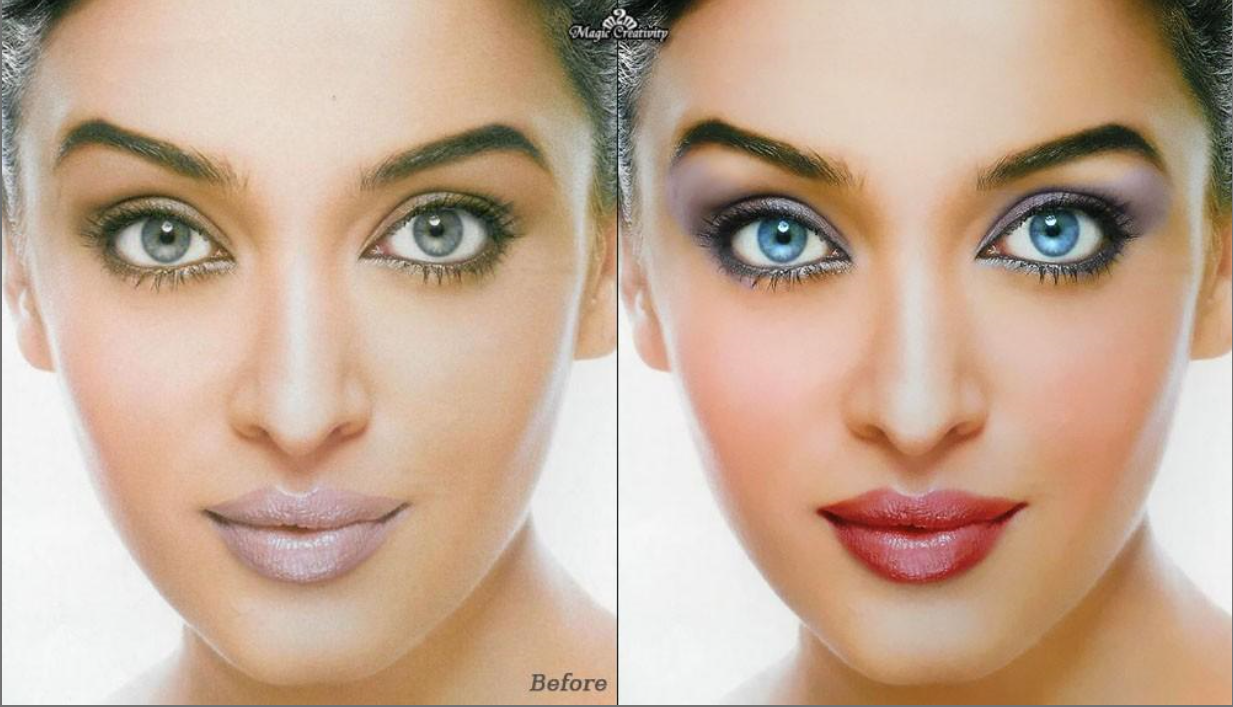

These baby steps towards a better culture are just that, baby steps and have yet to become popular in the countries where the advertising is the most extreme. These companies, instead of just using untouched photos, are calling attention to this fact as if it is some brand new idea to use real looking people to sell products instead of unrealistic Photoshop creations. On a brighter side however, there are many companies that are fighting against using Photoshop to advertise their products, but the idea is unfortunately still in its infancy. By refusing to leave models the way they look naturally, companies are feeding into the insecurities of adolescent children, and telling them that they should feel ashamed of the way they look because naturally they will never be as beautiful or handsome as the fabricated person on the cover of a magazine, or the almost animated creature selling some product. Cases of Body Dimorphic Disorder leading to Anorexia and Bulimia are spreading from country to country, as “models” get thinner and thinner. Plastic surgery has become a real life Photoshop for the youth that has grown up in a world that allows them to believe there is only one way to be beautiful. As the use of Photoshop becomes more extreme, the desire to “be beautiful” becomes more extreme as well. For the men in countries like Brazil plastic surgeries are usually more centralized to the face, as Germanic features are idealized, while remaining tanned. This has led to a rise in breast augmentation and anorexia to allow for the tiny waist and large hip and bust that is so unrealistically fought for. In Latin American countries such as Brazil and Mexico, the days of guitar shaped women are gone as the ideals begin to shift towards a westernized hourglass shape. This leaves young men and women in countries such as South Korea looking to plastic surgery to “correct” their bodies to fit the mold that has been fabricated through hours on Photoshop. When looking at studies showing the ideals of a particular culture one can see that many of them take beauty to the extreme.

Many countries around the world use advertising to normalize unrealistic body images with their youth. Outrageous body ideals unfortunately, are not only an issue in the United States.

Sixteen percent of high school boys have an eating disorder and many report that they are more afraid of gaining weight than getting cancer or other terminal illness. Areas of the body such as the jaw line and abs are electronically altered to be more appealing. Magazines, such as GQ, use photoshop to create the perfect male model. Dove’s Campaign for Real Beauty has criticised the use of photoshop on male models. Several of these studies have found that men of all ages become more self-conscious and even develop eating disorders as a direct effect of media advertisement. In recent years, studies have started to focus on how men are affected by media advertisements. With hundreds of beauty products on the market it’s no surprise that the advertisements have a dramatic affect on their audience by encouraging them to purchase the “miracle product” that will make them beautiful. I do not think that is acceptable for advertisements to be causing women to feel like this. Forty percent of newly identified cases of anorexia are in girls fifteen to nineteen year olds. Twenty billion is spent on beauty advertisements in the US annually, that’s a lot of money to be spent making women women feel worse about themselves. Eighty percent of women feel worse about themselves after seeing a beauty ad. Seven million girls and women under 25 suffer from eating disorders, because of women seeing ads of how they should be. In the top picture she has no flaws, but she was changed completely to be the ideal for the company. In this advertisement it shows how photoshopped this female model is.
#Photoshop mackup befoe and after tv#
By the time they are 17, these girls have seen 250,000 TV commercials telling them they should be a decorative object, sex object, or a size they can never achieve. Why do you think that these girls feel this way? Advertisements of women being ‘perfect’ influence adolescence. Today 42% of girls in grades 1-3 want to be thinner, 51% of 9-10 year old girls feel better about themselves when they are dieting, 53% of 13 year old girls are unhappy with their bodies and by the time they are 17, 78% of them will be. Young children today are so worried about how they look and how they dress. Start with youtube video called Onslaught by Dove.


 0 kommentar(er)
0 kommentar(er)
